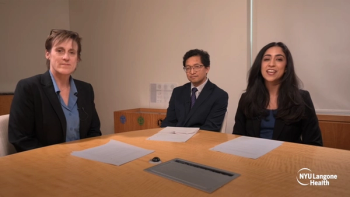
Ophthalmology Times Europe Journal
- Ophthalmology Times Europe November 2019
- Volume 15
- Issue 9
Gene therapy offering hope for retinal, corneal patients
The era of gene therapy in ophthalmology has begun. A treatment for patients with confirmed biallelic RPE65 mutation-associated retinal dystrophy is now available and there are many ongoing studies of gene therapies for inherited and other retinal degenerative diseases.
This article was reviewed by Guyléne Le Meur, MD
In December 2017, voretigene neparvovecrzyl (Luxturna, Spark Therapeutics) became the first gene therapy with a recombinant adeno-associated virus vector for an ophthalmic disease.
The story of its relatively short journey from preclinical development to regulatory approval gives hope for the future of gene therapy in ophthalmology, said Guylène Le Meur, MD.
Related:
“Currently, many other clinical trials are investigating gene therapy for various inherited retinal degenerations. There are almost 200 patients enrolled in these studies and approximately another 600 patients in studies of gene therapy for other retinal degenerative diseases,” said Dr. Le Meur, Department of Ophthalmology, Centre Hospitalier Universitaire de Nantes, Nantes, France.
“We can also expect to be seeing gene therapy arrive in the future for inherited corneal dystrophies,” Dr. Le Meur added. Voretigene, which is given as a subretinal injection, is also the first pharmacologic therapy approved by the FDA for an inherited retinal dystrophy.
Specifically, it is indicated for the treatment of adult and pediatric patients with vision loss caused by confirmed biallelic RPE65 mutations who have sufficient viable retina cells.
“The treatment is given in both eyes, with the second eye injected at least six days after the first, and immunosuppressive therapy with prednisone should be started prior to the injection and continued after,” Dr. Le Meur said.
Related: LHON gene therapy: Deciphering phase III data
Preclinical studies conducted in a canine model provided proof of concept that the gene therapy resulted in functional and structural recovery of the retina. Results from the first clinical trial investigating voretigene in patients with RPE65 Leber’s congenital amaurosis were published in 2008, and the paper describing the results of the phase III study was published in 2017.
The phase III study included 31 patients, of which about two-thirds were children. Participants were randomly assigned 2:1 to receive bilateral injection of the gene therapy or to a control group that were initially observed and then received delayed therapy after one year.
Change from baseline to one year in functional vision as measured by performance on a multi-luminance mobility test (MLMT) developed specifically for studying the efficacy of voretigene was investigated as the primary endpoint.
Testing results showed that two-thirds of the treated patients were able to complete the course at the lowest illumination level whereas all of the untreated control patients failed to maneuver the course.
Related:
Additional testing showed a benefit of the treatment for improving full-field light sensitivity, and a recent publication showed the improvements are durable with follow-up to four years.
Voretigene was approved by the European Union in 2018, but due to stringent criteria pertaining to education and certification of the personnel involved with product storage, preparation, and administration, the gene therapy is currently only available in France and Germany.
Gene therapy pipeline
Other gene therapy trials for Leber’s congenital amaurosis are ongoing. In addition, gene therapies are being developed for choroideremia, Stargardt disease, Usher syndrome, retinoschisis, retinitis pigmentosa, and achromatopsia. Corneal dystrophies being targeted for gene therapy include lattice, Reis-Bucklers, Thiel-Behnke, and granular corneal dystrophy
Read more by Cheryl Guttman Krader
Guyléne Le Meur, MD
This article was adapted from Dr. Le Meur's presentation of the 2019 congress of the European Society of Cataract and Refractive Surgeons. Dr. Le Meur is a founder of Horama, which is a biopharmaceutical company developing gene therapies for retinal diseases.
Newsletter
Don’t miss out—get Ophthalmology Times updates on the latest clinical advancements and expert interviews, straight to your inbox.













































